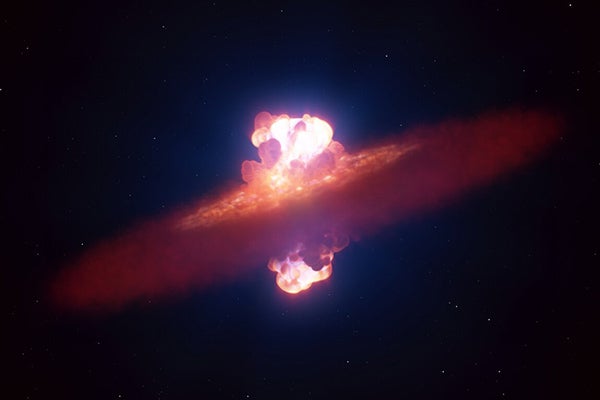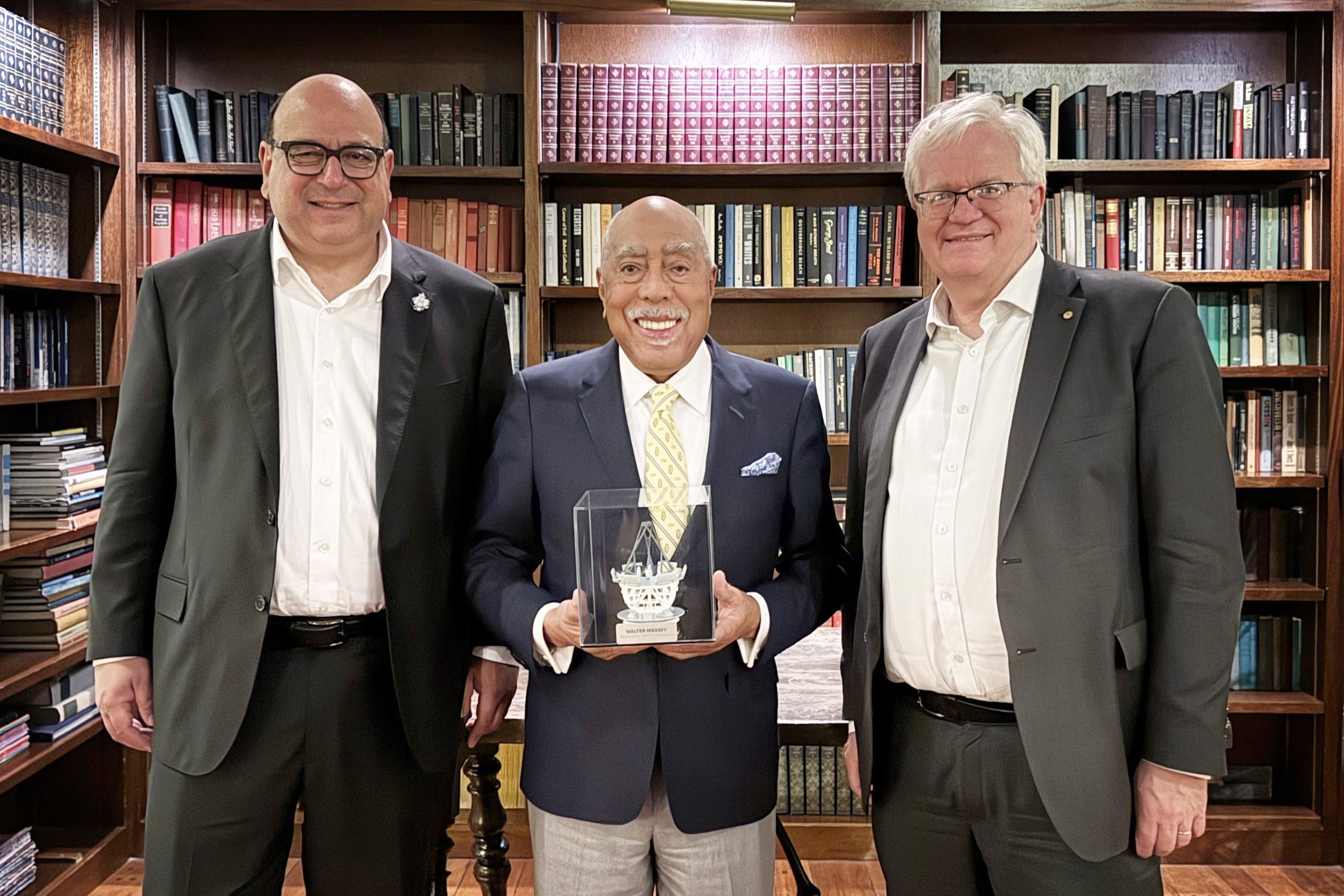Planet Probes, All the Rage Now, Have Deep Roots at UT Austin

Photo courtesy of NASA.
Update: In October 2019, exoplanet research by scientists at Princeton and the University of Geneva was awarded the Nobel Prize in Physics. Read on to learn about the UT connection to pioneering the search for planets beyond our solar system.
This year may go down in science history as the Year of Super Planetary Research.
NASA launched its Mars InSight mission to probe our closest planetary neighbor. The space agency also launched the Transiting Exoplanet Survey Satellite (TESS) and is working toward launch of the James Webb Telescope, the world's largest telescope in outer space for which some planet-hunting projects are planned. It also is coming off of a major success for the Kepler mission, when it paired sophisticated artificial intelligence systems with a space telescope to identify planets in another solar system.
Scientists at the University of Texas at Austin—who are longtime NASA collaborators, including on much of the new planet-exploration work—are eagerly awaiting the data about distant worlds these new projects will provide. They also had a hand in pioneering the field of searching for planets unknown to humankind.
Looking to TESS and Beyond
TESS, the ambitious successor to the Kepler mission, is expected to survey 90 percent of the sky and view nearly 400,000 stars, trying to catch the silhouettes of planets as they pass in front of those stars. Data about those stars and planets will be publicly available through NASA's TESS Science Support Center.
"TESS will very quickly release a list of candidate stars for study," said Michael Endl, a senior research scientist in astronomy. "We'll be doing ground-based follow-up characterization using the telescopes at McDonald Observatory."
As they start hunting for planets in the data, UT's exoplanet research team, which includes faculty scientists, as well as award-winning post-docs and graduate students, has several advantages. The Hobby-Eberly Telescope at McDonald Observatory, with its 11-meter mirror is one of the largest optical telescopes in the world. It was specifically designed for spectroscopy, the decoding of light from stars and galaxies. This makes it especially good at finding exoplanets. As scientists try to learn more about these distant worlds, such as what kind of atmosphere they might have, spectroscopy becomes critically important.
A state-of-the-art infrared spectrograph system was added to the Hobby-Eberly Telescope last year. The Habitable Zone Planet Finder (HPF) will be used to study red dwarf stars, the most common type of star in the Milky Way, and can be used to detect a "Doppler wobble" in the star caused by the gravitational pull of a planet orbiting in the habitable zone.

Hobby-Eberly Telescope at McDonald Observatory. Photo courtesy of The University of Texas at Austin.
"These instruments are going to give us a major advantage in doing the follow up on TESS," said William Cochran, a UT astronomy professor who has been hunting exoplanets since the 1980s. "Both the experience we have from previous missions and our facilities. And we're constantly upgrading."
Building on Experience
Some members of the Department of Astronomy bring experience from the Kepler and K2 missions. Endl and Cochran were investigators on the Kepler team and contributed to several significant discoveries. One, Kepler 452-b, was the first near-Earth sized planet around a sun-like star in the "habitable zone," a distance scientists say has the conditions for liquid water and could, therefore, be conducive to life.
"We have our follow-up techniques all down to an art, thanks to Kepler and K2 follow-.
up," said Cochran. "Everyone is eagerly awaiting the TESS data to begin work on that."
In fact, UT researchers have been hunting planets almost longer than anyone. In 1996, just a year after the first exoplanet orbiting a sun-like star was discovered, Cochran led a team that found 16 Cygni Bb, a Jupiter-like planet with a year 799 days long located about 69 light-years from Earth. Endl was a part of the team that discovered Proxima-b, a rocky world found orbiting the closest star to our solar system. As part of his PhD thesis, Endl discovered Iota Horologii b in 1999, the first exoplanet in the habitable zone of a sun-like star.
Finally, just last year, UT astronomer Andrew Vanderburg was part of a team that announced the discovery of Kepler-90i, the eighth extrasolar planet in a solar system that is now the first to have been identified with as many planets as our own.
Supercomputing the Search
In addition to decades of experience, the UT planet-hunting team has another advantage in the Texas Advanced Computing Center, which houses some of the most powerful computing hardware and software in the world. Astronomy researchers are using TACC resources to crunch data from the Kepler and K2 missions to determine occurrence rates for different types of planets and to make sure planets hiding in the data weren't missed.
"We've detected so many planets, but we don't know what's in the data that we could not have detected," said Cochran. "Some of the stars are 'noisy,' and some of the planets give you a very small signal. Some of the planets have an orbital period that is not conducive to study. As you can imagine it's a very computing-intensive project."
TESS data will likely make its way into the TACC systems in a few short months.
Pop-Up for Planet Research
This summer, researchers working on a project led by the Office of the Vice President for Research plan to move beyond finding planets outside our solar system. Experts from fields like astronomy, planetary physics, biology and engineering will hold a Pop-Up Institute to discuss planetary habitability.
"It's very unusual to see so many disciplines in the same room," Endl said. "That's why we're doing it."
The goal of the Pop-Up Institute, which will run June 12-July 26, is to hold discussions on how to find and identify habitable planets, as well as how to find and identify extraterrestrial life, should it be discovered.
"It will probably raise more questions than we have answers, but that's OK, especially in this field," Endl said.
Participants hope to identify the most important questions, develop long-range campus-wide research efforts around planet habitability, and, hopefully, start drafting proposals and how to answer those questions.
"I think even if you're not interested in astronomy, everyone has asked themselves if we are alone," Endl said. "We're getting closer to answering that question. I'm sure we're looking at very exciting times ahead."



